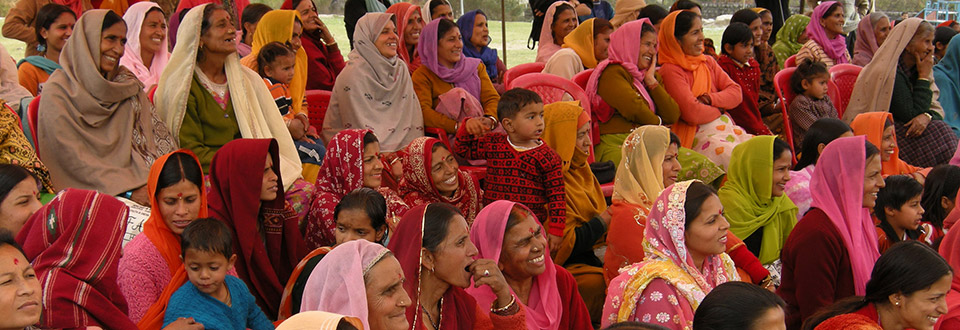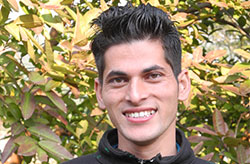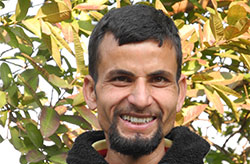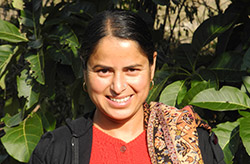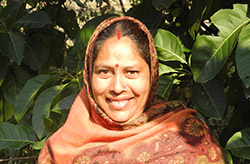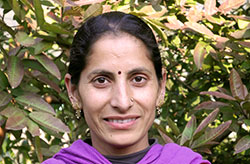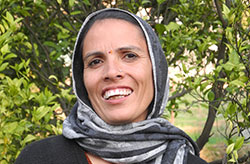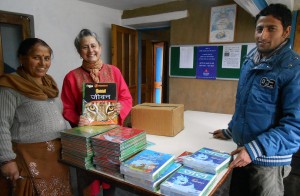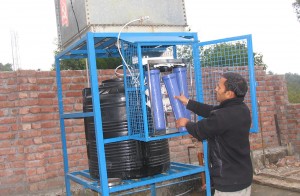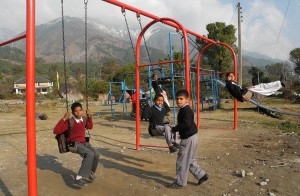In the past the Sidhbari area was populated by subsistence farmers, shepherds and labourers whose work was often seasonal and unreliable. In recent years, the demography of the area has changed with many educated young people seeking to escape the pollution and stress of life in congested cities by coming to visit or live in the hills. Villagers who own land are tempted to sell plots to enable incomers to build so the rate of construction on what was once farmland is surging. Many families are able to earn good income from renting to students and visitors or by running taxis. However, those who are landless still depend on dally wages and find themselves in a very different economic situation. The divide between those who are doing well and can afford to send their children to the burgeoning private schools and use private health facilities and those whose children go to the local government schools and use the government hospitals is becoming more obvious each year, leading to different kinds of stress and tensions within families and the community.
Women continue to suffer due to social expectations and though they are no longer as constrained as they used to be, even girls who have been to college will be expected not to work once they are married and find themselves restricted to taking care of the household. Society still strongly favours the boy child and now that families restrict themselves to two children the pressure to produce a boy is even more urgent. Women’s position in the family continues to be insecure, vulnerable and very often isolated. When widowed they are still considered bad luck and looked down on.
Consequently, women are often the victims of emotional and sexual violence, both within their own families and if they go outside to work. In a culture in which women are blamed for causing a man to abuse them, they get little support whatever age they are. This can then lead to a sense of helplessness and lack of pleasure in their lives – which in turn can give rise to depression, anxiety, psychosomatic illnesses and other emotionally-based conditions.
Single Women, a category that includes all women who live outside the norm of marriage whether widowed, divorced, abandoned or never-married women are particularly at risk in this society. If a wife loses her husband through death or abandonment, it is considered her fault and she is socially de-valued. If she leaves him, by casting off her role as a wife she is considered dangerous to society. Equally, society considers that a woman who fails or elects not to get married is very strange and the object of scornful curiosity. These are traditional views commonly held, not only in village society but also in many urban, even educated communities and they impact enormously to reduce women’s capability and strength.
Adolescent girls are another vulnerable group who, despite increasing access to education continue to be subject to arranged marriages. As almost all married women leave their natal home and reside with their husband and his family, a newly married woman is cut off from her support system, friends and family, and thrust into a very vulnerable position. She is confined to the home and the family fields, and it often takes years for her to establish her position in her husband’s community.
Adolescent boys too experience tremendous stress when they struggle to reconcile the ever increasing differences between them and their parents in what they expect out of life. The incidence of alcoholism, drug abuse and suicides in young people is increasing as they see little hope of fulfilling their own or their parents’ ambitions in this highly competitive society. Arranged “in caste” marriages, lack of earning opportunities even with high educational achievements, and their feelings of frustration at not being able to live the good life as shown on the TV and in films, all contribute to creating problems for young people in our area.
Nishtha Community Centre
In 2002 we purchased the house next to the health clinic which was simply built and in poor condition from a family who wished to move to the Punjab. Extensive repairs and improvements were undertaken The original look of local Khanyara stone work and mud rendering has been maintained along with a bamboo and slate roof and simple wooden flooring. The courtyard is paved with local heavy slate chakkas and is now semi covered to protect it from the monsoon rains.
Since 2004 we have offered the community a wide range of vibrant activities for the local children and young people. It is also used for workshops, meetings and cultural programs.
Community Centre Staff and Facilities
The Community Centre facilities
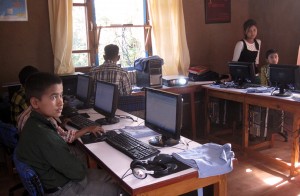
The computer room, set up with 7 up to date computers in which computer training classes are held every day.
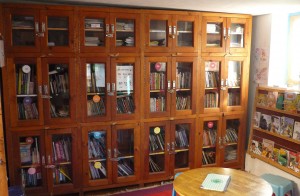
The Community library, a child welcoming space with easy access to over 1,000 books, primarily in Hindi
Residential facilities for visiting doctors, resource people, volunteers or special needs cases.
Functional kitchens provide space for tea, snacks and large quantities of food to be cooked and the school children or groups of people to be fed on the ground behind the centre on the covered verandas when it is raining.
Bathrooms with solar heated hot water and provision for handicapped people.
Nishtha Sports Ground Rakkar village ground used to be a difficult space on which to play because it was covered with rocks and frequently waterlogged by a stream cutting acoss the middle. It was gradually being encroached by local houses and people who wanted to build shops. In 2008 Nishtha undertook to remove the rocks and got in a JCB to level and extend the land so now it is large enough to construct a cricket pitch and to hold track and field sports. The stream was re-routed and the lower part of the ground levelled to create badminton and vollyball courts and a play centre of the children with swings, slides, climbing frames, see saws and a little roundabout. The ground has become the vibrant centre of the village and is regullarly filled with young people and children playing and enjoying themselves. Trees have been planted around the ground to offer shade and further protection of the area. The local youth have registered themselves as a sports club in order to offer further protection and government support for their ground.
